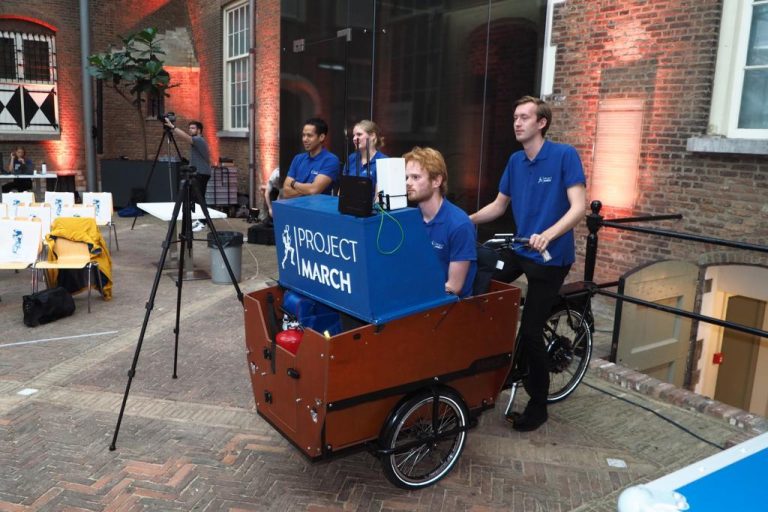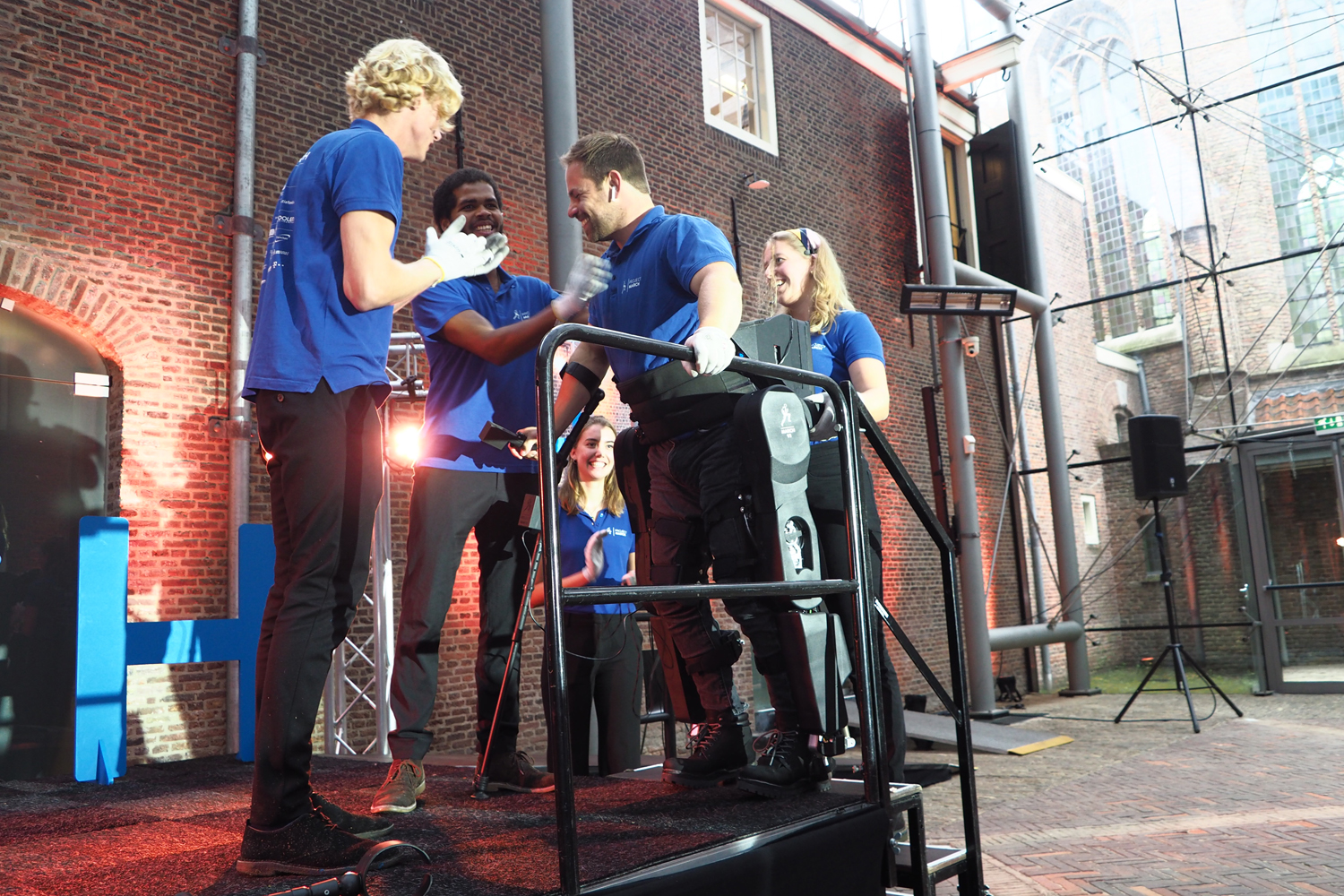This year, student team Project MARCH built a walking robot that can handle slopes, curbs and stairs. A summer shower put paid to the outdoor walk on Sunday.
Applause for Koen van Zeeland who walked the stairs in the walking robot. (Foto: Jos Wassink)
Accompanied by a camerawoman and surrounded by three catchers, Koen van Zeeland (34) walked into the Mandela room of Museum Prinsenhof. In the tense silence, the only sound was the humming of the electric motors. Step by step he plodded into the room, holding himself up with his crutches. Only when he stood up and a broad grin spread over his sweaty face did the applause erupt and cheers resound around the hall. A paraplegic who can walk again – that is a miracle. The applause was not only for pilot Koen van Zeeland, but for all 26 students who had worked towards this moment for 13 months.
The plan was that the entry into Prinsenhof would be the culmination of a 240 metre walk along the Oude Delft with its stone paving and arched bridges. Unfortunately, a heavy rain shower passed over just at that moment, so the organisation decided to move the entire demonstration inside. On Friday, Van Zeeland had done the whole route during a dress rehearsal, Chief Engineer Eva van Houwelingen says. A support team with computer screens in a cargo bike followed him to keep an eye on the technology. All went well and the eccentric parade drew a lot of attention.
Own way
Unlike previous years, the Cybathlon international exoskeleton competition was not the ultimate goal this time. Unlike the competition entries, the MARCH VI was designed for uncharted territory. The performance may look impressive in the Cybathlon race, but the robots are designed for the racecourse only and can’t do much outside of it. Team Manager Francesca Kessler felt that this had to change: the exoskeleton had to learn to cope with unfamiliar environments. And so, the team followed their own path.
To do this, they installed cameras on the front that measure the distance and height of the road. The pilot selects the type of route (flat, sloping or stepped) and the desired step size. The robot first plants the footsteps on the 3D trajectory and is then ready to execute. “The skeleton itself decides where to put its foot,” Van Zeeland says afterwards. “The suit is so strong, I can’t change it. I just have to go along with the movement.”
Naturally better
Being able to deal with unfamiliar environments is the first step (note the walking metaphor) towards a more flexible walking robot, says Chief Engineer Van Houwelingen. The next step is to make the suit self-balancing so that crutches become superfluous. The disadvantage is probably a heavier machine. The interaction with the user can also be improved, she says. The suit should only lift a foot when there is no pressure on it, in other words, when the user has his weight on the other leg. The team is also investigating alternatives for the control, such as Google glasses or an EEG scan so that the user can continue to look ahead.
Suit or chair?
“When it comes to getting a cup of coffee from the vending machine, the wheelchair is a lot easier,” says Van Zeeland. “It’s quick, easy and manoeuvrable. Compared to that, an exoskeleton is a lot of effort for a little result.” Nevertheless, he has enjoyed training 21 times with the student team. “My arm and chest muscles have grown enormously,” he says. “It was a good work-out, because I use very different muscles than in the wheelchair.” Team Manager Francesca Kessler also sees health benefits in the use of the exoskeleton with spinal cord injury patients. Rehabilitation doctors see better blood circulation in the legs, and a strengthening of the overall condition. The risk of thrombosis and pressure spots decreases, and bowel function improves, they write. Rehabilitation physicians at Erasmus MC are going to further investigate these health effects in the coming year.
- Website of Project MARCH
 For outdoors use, Project MARCH developed a mobile mission control. (Photo: Jos Wassink)
For outdoors use, Project MARCH developed a mobile mission control. (Photo: Jos Wassink)
Do you have a question or comment about this article?
j.w.wassink@tudelft.nl


Comments are closed.